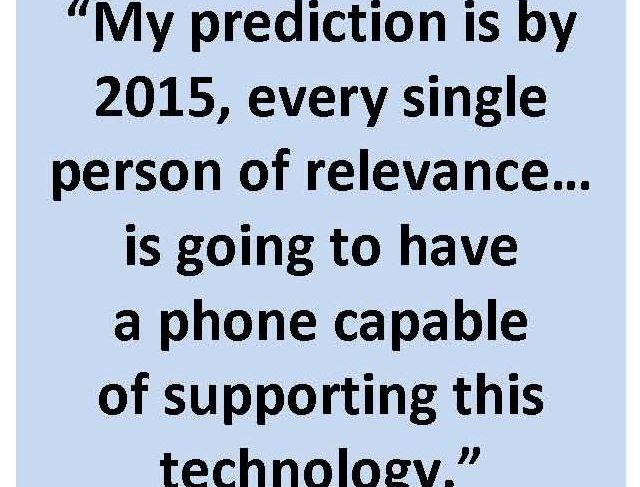
OTTAWA – Developments in the mobile payments space have been slow and ongoing for a number of years but those efforts are beginning to bear some fruit, said vice-president of emerging business at Rogers Communications Inc. David Robinson.
However, he cautioned, there is still work to do.
Speaking at the 2010 Mobile Money Forum in Ottawa last week, the Rogers’ executive talked about the Pay-Buy-Mobile initiative and how efforts among a large number of international mobile operators, handset makers and the Global Mobile System Association (GSMA) are making headway. In a nutshell, the initiative is trying to combine the large payment networks (Visa, MasterCard and Amex) with the GSM mobile wireless standard to make mobile payments a reality.
Integrating payment functionality into a mobile phone would be done with near field communications (NFC) technology. It’s already in use by MasterCard with its PayPass-enabled credit cards where a customer simply taps the card on a payment terminal capable of accepting such cards. Tim Horton’s has rolled out the technology across many of its locations, too. In a mobile phone environment, the NFC radio chip would be embedded in the SIM card.
“The objective is we need a standard methodology whereby payment cards can go into mobile phones. If you can figure that out, then every OEM (original equipment manufacturer) in theory would build it in. And if gets built in like Bluetooth is built in today or a camera is built in today or a video player is built in today, then it will become a ubiquitous feature on the mobile device.”
But that’s easier said than done, noted Robinson. “Years later we’re finally getting to the starting line.”
Rogers sees the mobile wallet as a simple electronic extension of the physical wallet: take everything inside and transfer it to the mobile phone. (Robinson described the physical wallet as the five-inch thick wallet that Cliff Clavin might carry – the know-it-all character from the popular television series Cheers). The mobile wallet would include open-loop payment cards (Visa, MasterCard, Amex) as well as closed-loop payment cards – those for retailers. But it wouldn’t be limited to payment cards as the mobile wallet lends itself particularly well to hold electronic versions of other types of ID cards.

“It is a platform designed for payments, but it can do anything that has the same or lesser of security requirements,” Robinson explained. “Our perspective of the wallet is it’s a secure electronic version of the physical wallet. It allows the customer to store payment, loyalty, ID, transit cards, memberships, building access passes, receipts, coupons, whatever.”
The mobile wallet could actually help provinces fight healthcare fraud, said Robinson. He noted that British Columbia has a population of about 4.5 million and in theory there should be the same number of health cards. But, he noted, there are actually 8 million of them in circulation, meaning there is significant fraud taking place in the province.
The mobile phone can help deal with this escalating problem, Robinson said, acknowledging that while the technologies are leading edge, there are some available to provide “secure remote identification.”
NFC-enabled mobile phones to skyrocket in five years
Robinson discounted suggestions by Christies Christelis, president of Technology Strategies International, that only 500,000 NFC phones would be on the market in five years. The Rogers executive said this number could reach 30 million in Canada alone when combining its numbers with growth projections from the other two large national players.
“My prediction is by 2015, every single person of relevance (20% of people will never make mobile payments) is going to have a phone capable of supporting this technology,” Robinson said.
Merchants remain one of the primary barriers to adoption of mobile payments in Canada, and Robinson addressed this in his presentation. He acknowledged that a new payment option will not get them enthused about implementing mobile payments, but advertising and coupons may be catalysts.
“I think there’s going to be some linkage between mobile payments and coupons which logically are something that draws the merchant to actually want to do this stuff,” he said.



